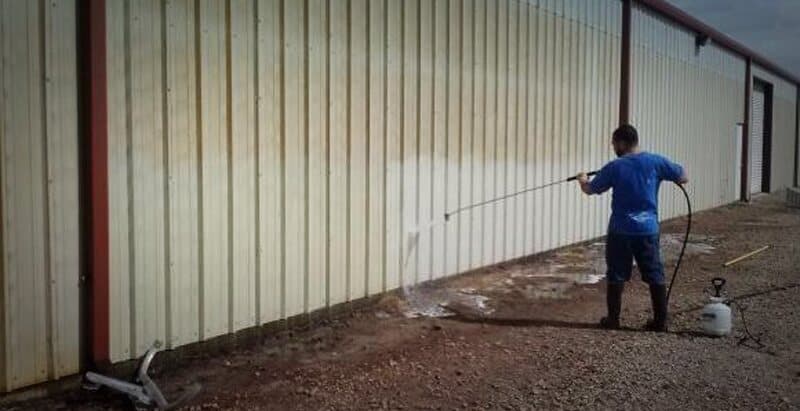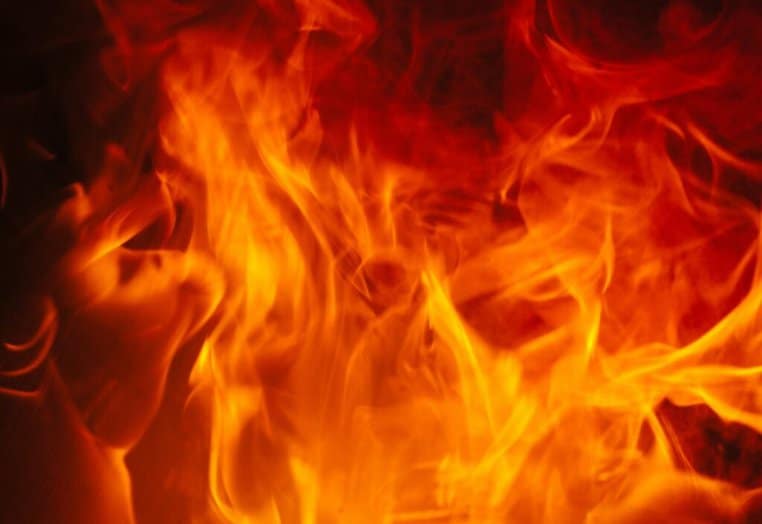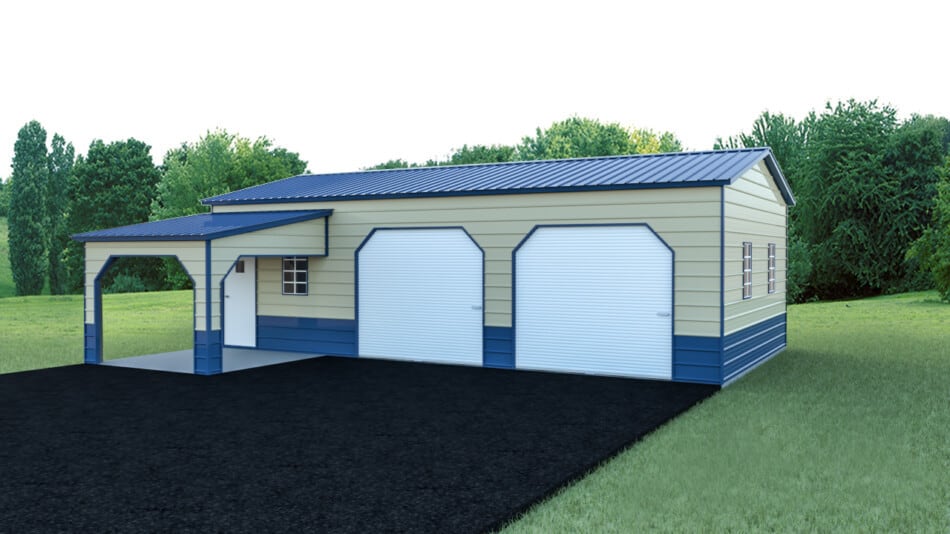Metal buildings can be designed to last decades, where 20-50 years is typical. However, metal buildings can be built poorly, or unprotected from corrosion, causing them to rust or fail in short periods of time.
Metal buildings are reasonably durable. They are typically constructed with steel, which is highly resistant to corrosion, heat, wind, and heavy loads. Even when impacted by harsh weather, fallen trees, or high force winds, most well-constructed steel structures should rebound with simple touch-ups.
Here are some factors to consider with constructing a metal building to ensure durability and a long life span.
Metal Buildings Resist Corrosion
The biggest risk of metal buildings consists of rust and corrosion. Most metal buildings are built from steel, which is highly resistant to corrosion. Buildingsteel.org says that most steels can self protect, meaning that a superficial layer of rust might form to prevent the rest of the structure from degrading.
Some coatings and paints can prevent dings, knicks, and scratches from becoming structurally detrimental. As long as the coating or paint doesn’t get compromised, the steel structure would last indefinitely.
These coatings can be applied at the manufacturer before shipping, or field applied after erecting. Factory-applied coatings are typically more reliable. However, if you have any modifications in the field, such as drilling a new hold, then you should consider applying additional coatings after erecting.
With normal maintenance on your building, your metal building should last for decades. Make sure to plan painting, sealing, and caulking around your structure on a regular basis. It is much easier to fix a small patch of corrosion or a weak bolt before it causes damage to other parts of your structure.

Additionally, metal buildings are exposed directly to oxygen and moisture, both causing decay and corrosion. Salt, typically used in winter to melt snow, may intensify the process of corrosion. Rust is not only unattractive, but can seriously undermine the dignity of the system if left unchecked. Protective coatings, such as paint and acrylic finish, will keep rust from forming, adding many years of life to the structure.
Metal Buildings Aren’t Compromised By Pests
Most structures need a plan for pest control. Wood structures can be compromised by moisture damage and termites. Moisture control requires consistent painting and patching to make sure the dampness doesn’t cause the wood to rot. Controlling termites requires frequent pesticides, which can be harmful to pets and children.
Metal buildings on the other hand are naturally resistant to termites and other vermin. Even with an infestation inside the structure, superficial finishes can be easily replaced. While squirrels, rats, or mice might be able to chew through finishes like sheetrock, or wood framing in other structures, they typically won’t be able to get through the metal sheathing in a metal building.
Steel and metal elements are inorganic and thus totally resistant to the chomping teeth of hungry termites. However, doors or windows may be prone to damage.
That being said, metal buildings are not resistant to everything. All kinds of bugs are eager to find quiet, dark places to hide during the hot summer months. Any of these pests can be very threatening, from spiders and ants to wasps and hornets. If you’re concerned about bugs and rabbits finding a home in your metal garage, take precautionary measures to prevent infestation.
The first thing to do, and the best way to keep your buildings free from rodents, is to make them safe and organized. Being able to detect a spider, a roach, or a rodent as easily as possible makes it much easier to make sure they don’t find a permanent home. Hold things placed in enclosed containers or bins and keep them raised on a shelf or table.
[mc4wp_form id=”1824″]
Metal Buildings are Fire Resistant

Metal has a high resistance to fire and heat. Steel is forged in very high heat, meaning that most small fires do little damage to the structural integrity of the building. Many finishes and systems might be damaged, but after cleaning any soot away, the structure itself can mostly be reused.
Additional fireproofing can be applied to structural members to increase the fire-resistant nature of the building. In general, structural steel retains 60% of its ambient temperature yield strength at 1,000 °F–and most building fires exceed that temperature at some point without fireproofing according to American Institute of Steel Construction.
If you use your metal building as a workshop, you may consider installing fire sprinklers to minimize damage to interior finishes. Particularly, if you store combustible materials, like oil and gas, inside the building.
Steel is a tough, non-combustible, fire-resistant material. When correctly built and installed, steel frames can maintain their structural integrity in the event of fire and exposure to sustained elevated temperatures. The International Building Code (IBC) and other existing building codes provide prescriptive guidelines for deciding whether and what conditions apply to the different categories of building codes.
Structural Stability
When correctly designed for the weather and structurally loading of the intended use, metal buildings are very durable. The structural elements inside the building should be designed to deal with common loads, such as snow, rain, and wind. The gauge of the metal sheathing may be larger, or the metal beams or joists might be a bigger size.
Common points of failure are typically the connecting components, such as the bolts or brackets that hold the structural down to its foundation, or the roof down to the walls. If these common points of failure are installed correctly, the structure should not fail.

Metal structural members should not warp, split, twist, or crack as long as they have been designed correctly. So, when designing your metal building, make sure you understand the weight limitations of your structure. For example, if you have a loft, make sure you don’t store more than the weight limit allowed by the structure. Or, if you hang equipment, tools, or supplies from the roof, make sure you don’t add too much weight.
If you live in an area with high winds, you can design your metal building to withstand the high wind loads. With larger bolts and screws, or heftier brackets or braces, a metal building can be built to withstand even tornado force winds.
Metal buildings may have the impression of being flimsy or cheap, but when designed properly, the buildings can last for a long time. As with any other structure, a metal building needs proper maintenance to hold on to its `. However, if a metal building reaches the end of its usable life, most of the materials can be easily recycled into a new building in the future.
Maintaining Your Steel Building
If you’re hoping to use your steel building for a long time, you may be thinking how to give it the best chance for a long existence. Fortunately for you, steel buildings are pretty solid on their own, so if you want to take care of it properly, there are a couple of things you can do.
Wash and Paint your building

This may sound a little elementary, but in being able to preserve the steel construction adequately, it’s a smart idea to have a thorough cleaning at least once a year.
To safeguard the roof, you want to clean any leaves and crud that might be collected over time much as you will for your downspouts. When you plan to scrub the outside thoroughly, it’s better to do it in the spring so that you can clear any cold-weather residue. Finally, give your building a fresh coat of paint.



Recent Comments